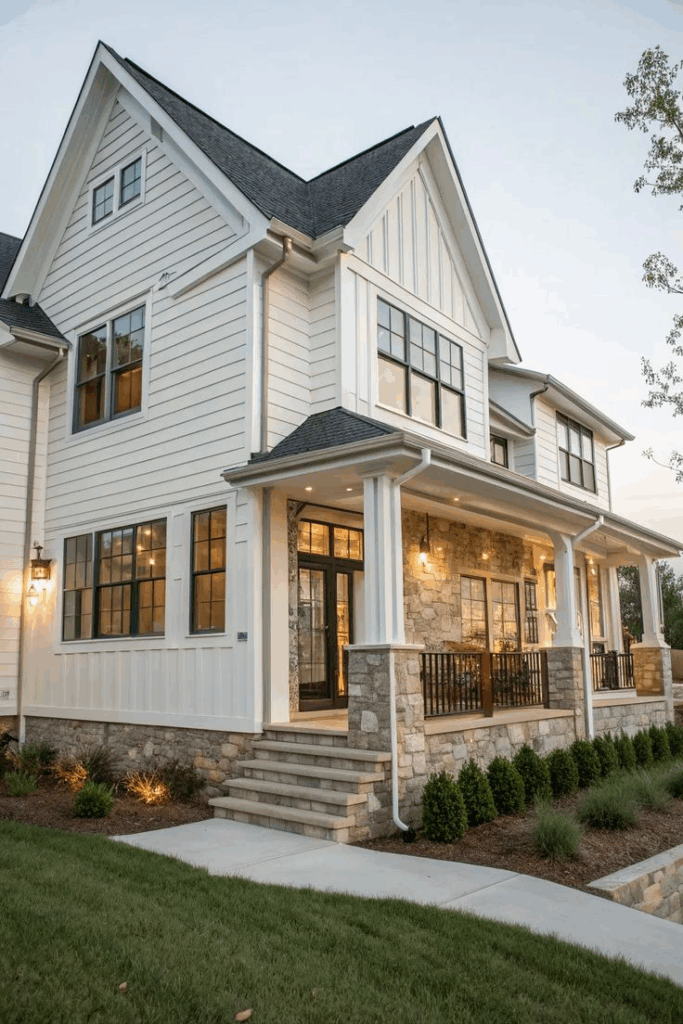
When it comes to affordable, low-maintenance exterior home improvements, vinyl siding continues to be a top contender in 2025. Whether you’re building a new home or upgrading your current exterior, vinyl offers homeowners a durable and stylish solution without the hefty price tag. But like any siding material, it comes with both benefits and limitations.
In this guide, we’ll explore the pros and cons of vinyl siding, highlight the most popular styles in 2025, and help you decide if it’s the right choice for your home based on climate, architecture, and budget.
What Is Vinyl Siding?
Vinyl siding is a type of plastic exterior cladding made primarily from polyvinyl chloride (PVC) resin. It was introduced in the 1960s as a low-cost alternative to wood siding and has since evolved into a highly versatile and reliable option.
Today’s vinyl siding is engineered to withstand the elements while mimicking the appearance of traditional materials like wood or stone—without the maintenance those materials require.

Top Benefits of Vinyl Siding
1. Cost-Effective
One of the biggest advantages of vinyl siding is its affordability. On average, it costs 30%–50% less than fiber cement or wood siding, making it ideal for budget-conscious homeowners or large exterior renovations.
2. Low Maintenance
Vinyl is virtually maintenance-free. It doesn’t require painting or staining and can be cleaned with a simple hose or power washer. This makes it especially appealing to homeowners who want a beautiful exterior without constant upkeep.
3. Weather-Resistant
Modern vinyl siding is designed to withstand wind, rain, hail, and UV rays. Some high-grade vinyl products are tested to resist winds of up to 110 mph or more.
4. Versatile Style Options
From traditional clapboard to bold vertical panels and even shingle or shake designs, vinyl siding offers countless textures and color choices. It can complement everything from Colonial to Contemporary architecture.
5. Energy Efficiency (with Insulated Options)
Insulated vinyl siding includes a layer of foam backing that improves your home’s thermal resistance (R-value), helping to reduce energy costs and increase comfort year-round.
Limitations of Vinyl Siding
While vinyl siding has many perks, it’s not perfect. Here are a few potential drawbacks to consider:
1. Less Durable Than Some Alternatives
While it holds up well under normal conditions, vinyl can crack or warp under extreme temperatures or impacts (like hail or debris). In very hot climates, prolonged sun exposure may cause fading over time, although many manufacturers now offer fade-resistant options
2. Can Look “Plastic” Up Close
Although vinyl can replicate the look of wood from a distance, it often lacks the rich texture and authenticity of real wood or fiber cement when viewed up close. Some homeowners and buyers may view it as a lower-end material.
3. Environmental Impact
Vinyl siding is made from PVC, which raises environmental concerns during manufacturing and disposal. However, some brands are now offering recyclable or more eco-conscious versions.
Popular Vinyl Siding Styles in 2025
The vinyl siding market in 2025 is more stylish and diverse than ever before. Here are some of the most popular styles and trends this year:
1. Board and Batten Vertical Siding
This farmhouse-inspired style features wide vertical panels separated by narrow strips (battens). It’s ideal for modern farmhouse or rustic-style homes.
2. Shake and Shingle Siding
Designed to mimic cedar shakes, this style adds texture and charm—especially for Cape Cod, Craftsman, and coastal homes.
3. Dutch Lap Siding
A classic horizontal profile with a shadowed edge, Dutch lap offers a more sculpted appearance than standard lap siding.
4. Bold, Dark Colors
In 2025, deep colors like midnight blue, charcoal, and forest green are trending, often paired with crisp white trim for contrast.
5. Mixed-Material Looks
Many homeowners are using vinyl alongside other siding types, such as stone veneer or fiber cement panels, to create custom, multi-dimensional facades.
Is Vinyl Siding Right for Your Home?
The answer depends on your budget, climate, design goals, and personal preferences.
Ideal for:
- Moderate climates (not too extreme in heat or cold)
- Budget-conscious homeowners
- DIYers (vinyl is one of the easiest siding materials to install)
- Homes that prioritize low maintenance
May not be ideal for:
- Homes in very hot or very cold regions
- Luxury homes where high-end materials are expected
- Eco-conscious homeowners seeking sustainable materials
Final Thoughts
Vinyl siding remains one of the most popular siding materials in 2025 for good reason. It offers excellent value, versatility, and ease of maintenance, making it an ideal choice for a wide range of homeowners. While it may not offer the same prestige or durability as some premium materials, today’s vinyl siding is far from outdated.
With the wide array of styles and colors available—and innovations like insulated panels and fade-resistant finishes—vinyl continues to evolve with modern design and energy standards.

Tinggalkan Balasan